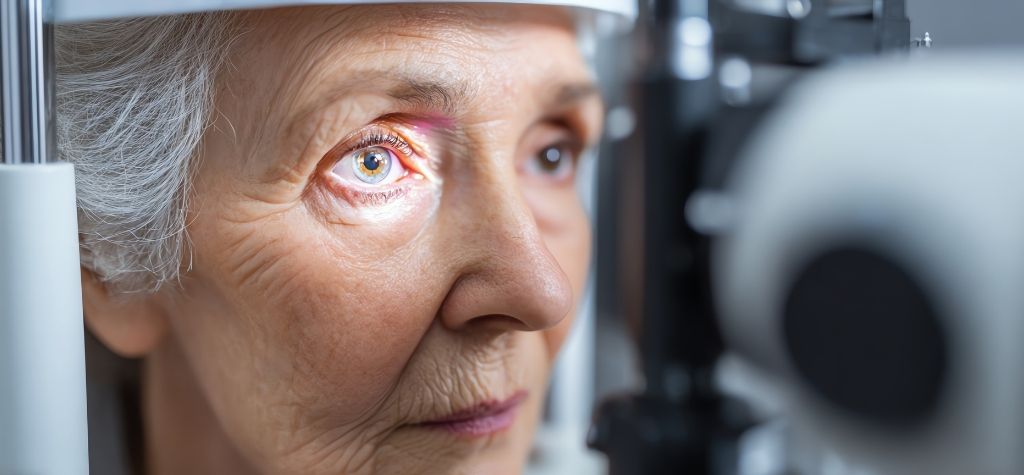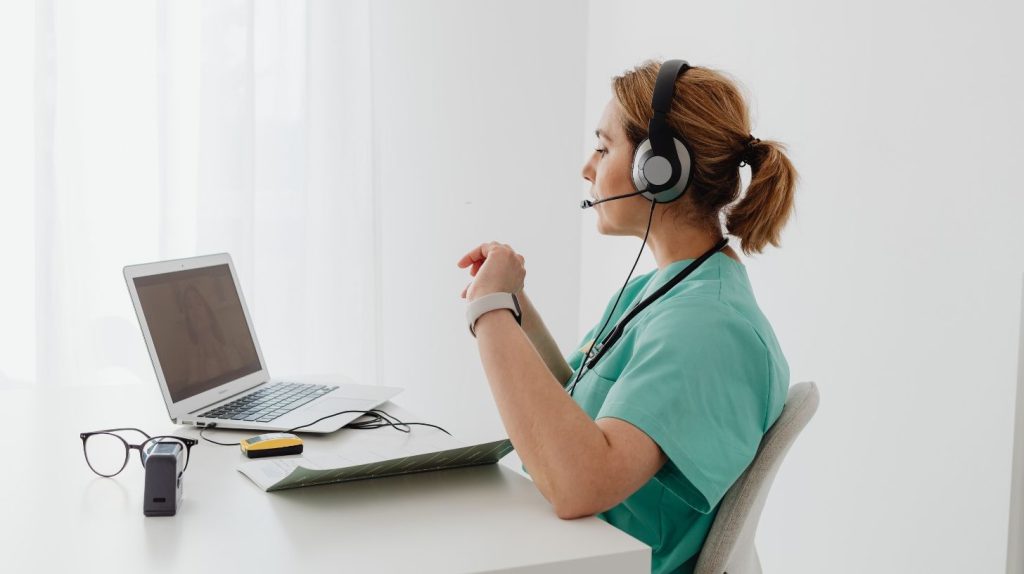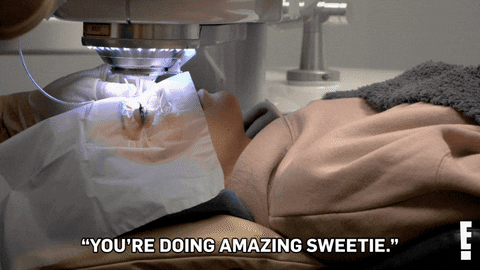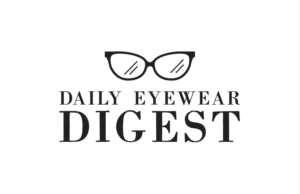Imagine being able to check your eyesight, renew your glasses prescription and pick out stylish frames without leaving your home. This scenario is no longer science fiction. Innovative tele‑health platforms, remote eye‑exam technologies and artificial intelligence (AI) are changing how we manage vision problems. The global eyewear market is already massive—valued at about USD 171.56 billion in 2024 and expected to grow to USD 181.75 billion in 2025. But the way consumers buy eyewear and interact with eye‑care professionals is shifting rapidly. Some industry observers believe 2026 could be the tipping point when traditional brick‑and‑mortar opticians must evolve or risk becoming obsolete.
This article explores the forces behind that prediction. We’ll look at tele‑optometry’s rise, AI‑driven diagnostic tools, direct‑to‑consumer eyewear companies, regulatory changes and consumer expectations. Throughout, we cite high‑quality studies and news from government or reputable organizations to back up claims. We also offer suggestions for opticians to thrive in a digital age.
The eye‑care landscape in 2025

Growing demand for vision correction
Rising rates of nearsightedness and other vision problems drive the market. The International Myopia Institute estimated in 2025 that about 30 % of the world population has myopia and projects 50 % by 2050. This growth, alongside a large aging population, fuels demand for spectacles and contact lenses. At the same time, the global eyewear market is fragmented, with many players competing across retail stores, online shops and ophthalmic clinics.
Traditional opticians – strengths and weaknesses
Strengths: Traditional opticians provide face‑to‑face fittings, personal service and immediate adjustments. They often include optometrists for eye exams and can detect health problems that online tools miss.
Weaknesses: Many operate from physical stores with high overhead costs. They rely on scheduled appointments and cannot serve patients outside their geographic area. Some consumers view them as expensive; a pair of glasses without insurance averages USD 351 in the U.S., a cost many pay out‑of‑pocket because spectacles and contact lenses are often not covered by insurance.
Force 1 – Tele‑optometry and remote eye exams

What is tele‑optometry?
Tele‑optometry refers to delivering eye‑care services using telecommunication tools, often with a “store‑and‑forward” or synchronous video approach. Teleophthalmology (a broader term) has been used for screening diabetic retinopathy and triaging urgent eye conditions. During the COVID‑19 pandemic, adoption skyrocketed; tele‑health was widely used to connect patients and practitioners.
A 2024 systematic review of teleophthalmology in low‑resource settings concluded that telemedicine could deliver cost‑effective, reliable and efficient eye care for underserved populations. However, the authors noted barriers such as high equipment costs, unreliable internet and resistance to technology. These findings imply that tele‑optometry works best when infrastructure and acceptance are in place.
Remote eye‑exam platforms are maturing
In April 2024, DigitalOptometrics announced it had conducted over 2 million remote comprehensive eye exams. Its platform lets optometrists operate ophthalmic instruments remotely via high‑definition video, providing prescription updates within minutes. The company notes that this improves efficiency and accessibility, offering services seven days a week and bridging language barriers through translation features.
A tele‑ophthalmology triage program at the Bascom Palmer Eye Institute managed 7,138 telehealth encounters among 6,227 patients during the COVID‑19 pandemic. The retrospective chart review found that 96.5 % of video encounters were successfully completed and that most participants were new patients who had not used telemedicine before. This study demonstrates how remote consultations can handle a large volume of patients without requiring in‑office visits.
Another mixed‑methods investigation of tele‑ophthalmology reported that patient satisfaction is high (over 90 %) when care is delivered virtually, and tele‑health is an effective alternative for managing urgent eye issues. The study found that telemedicine visits could detect issues like conjunctivitis and posterior vitreous detachment, while severe cases were appropriately referred for in‑person care. [Due to paywall restrictions, full details are summarized here.] These findings suggest tele‑optometry is not just convenient but also clinically effective.
FDA approval of at‑home vision tests
In 2022, the U.S. Food and Drug Administration (FDA) approved Visibly’s online vision exam technology—a self‑guided software allowing adults aged 22–40 to renew prescriptions remotely. Patients submit their medical history and receive results evaluated by a licensed provider. While the American Academy of Ophthalmology remains neutral, it recommends clinicians evaluate these tools like any other diagnostic modality, considering FDA approval, evidence of reliability, patient risk and data security. This regulatory green light signals that remote eye exams are moving into mainstream healthcare.
Impact on traditional opticians
Tele‑optometry’s convenience undermines a key value proposition of brick‑and‑mortar opticians: the ability to conduct comprehensive exams onsite. Patients in rural or underserved areas can now access licensed optometrists through video calls, and busy professionals may prefer the flexibility of remote tests. As more insurance plans and regulators recognize tele‑optometry, foot traffic to physical practices may decline. By 2026, remote exams could be routine for simple prescription renewals, leaving complex cases for in‑person visits.
Force 2 – Artificial intelligence and diagnostic innovation

AI‑powered refractive error detection
AI is transforming eye care through automated image analysis and predictive models. A 2025 review on artificial intelligence in optometry highlights REDNet—a neural network that predicts refractive errors from photorefraction images. The system achieved 89.5 % accuracy for spherical power and 96.7 % for cylindrical power, with mean absolute errors below 0.18 diopters. Such models enable online and remote screening, a crucial development for tele‑optometry.
Researchers have also developed AI tools to detect pathological myopia, strabismus and other ocular diseases using deep learning. For example, a support vector machine (SVM) analyzing optical coherence tomography scans achieved an AUROC of 0.8712 and high sensitivity and specificity in predicting pathologic myopia. These models can assist clinicians in early diagnosis and referral.
AI as an adjunct, not replacement
Professional organizations urge caution. Optometry Australia’s position statement states that AI should augment rather than replace clinical judgment, and any system must meet regulatory requirements. The statement warns against “black‑box” AI that lacks transparency and reminds practitioners that algorithmic bias could widen health disparities. In other words, AI can empower opticians but should not supplant their expertise.
Potential for AI‑driven online prescribing
In the near future, AI may analyze user‑supplied photos or scanning data to determine refractive errors and recommend lens prescriptions instantly. Combined with remote exam platforms, this could allow consumers to order glasses or contact lenses with minimal human interaction. Regulatory approval of such systems, combined with improved algorithm accuracy, could reduce the need for routine refraction visits to physical opticians. However, because AI tools depend on high‑quality data, they may be less reliable for patients with complex ocular conditions or overlapping health issues. Traditional opticians will still play a crucial role in diagnosing diseases like glaucoma or diabetic retinopathy and in managing comorbidities.
Force 3 – Online eyewear retailers and direct‑to‑consumer models

Rapid growth of e‑commerce
E‑commerce offers 24/7 accessibility, home delivery and competitive pricing, making it attractive for eyewear shoppers. The 2025 Fortune Business Insights report notes that the global eyewear market will grow from USD 181.75 billion in 2025 to USD 285.44 billion by 2032, partly driven by increasing availability of sunglasses and spectacles through online channels. The same report highlights a shift toward omnichannel models, where companies market products directly to customers via online platforms, helping them expand into untapped markets.
Online eyewear pioneers like Warby Parker started by shipping frames to customers’ homes for free trials. Today, large marketplaces (e.g., Amazon and specialized eyewear sites) allow shoppers to upload prescriptions, use virtual try‑on tools and receive glasses within days. Prices are often lower than those at optical shops, and sales events can drive further discounts. Some online retailers offer subscription services or insurance add‑ons for replacement lenses.
Virtual try‑on and personalization
Advances in augmented reality (AR) and 3‑D scanning let shoppers virtually try on frames. Companies such as DITTO provide 3‑D “face scans” to match frames to head shape, while others use smartphone cameras to measure pupillary distance. These tools reduce the need for physical fittings and appeal to younger consumers comfortable with digital interfaces. Meanwhile, 3‑D printing allows on‑demand production of custom frames, enabling companies to offer bespoke designs without holding large inventories.
Market consolidation and cost pressures
Although e‑commerce expands choice, the eyewear industry is consolidating. Major players like EssilorLuxottica and Johnson & Johnson dominate, and acquisitions can limit competition. Traditional opticians, often independent or small chains, may struggle to negotiate prices or access premium lenses. With many consumers paying out‑of‑pocket for glasses, price sensitivity favors online deals.
Impact on traditional opticians
Online retailers erode the retail portion of an optician’s business—frame sales account for a significant portion of revenue. If a patient obtains a prescription through a remote exam and orders glasses online, the optician loses both exam and product income. Some opticians respond by selling frames online themselves, offering price matching or bundling services (e.g., “buy frames here and get free adjustments for life”). But the convenience and price advantages of large e‑commerce platforms remain formidable.
Force 4 – Regulatory shifts and consumer empowerment

Eyeglass rule enforcement
In the United States, the Federal Trade Commission (FTC) enforces the Ophthalmic Practice Rules, commonly known as the Eyeglass Rule. The rule requires optometrists and ophthalmologists to provide patients with their prescriptions after an exam, enabling them to shop for eyewear wherever they wish. Recent updates emphasize that prescribers cannot require patients to purchase eyewear from them. This transparency fuels online sales and empowers consumers to compare prices.
State laws on remote exams
Regulation of tele‑optometry varies by state. Some states initially banned online eye exams but later reversed these restrictions. For instance, Indiana enacted a prohibition but repealed it in 2020. Other states, such as Georgia and South Carolina, still restrict or prohibit remote refraction tests. As remote technology proves reliable and consumer demand grows, more states may legalize it, reducing the regulatory barrier for online providers.
Privacy and data security considerations
Tele‑optometry and AI platforms collect sensitive health information. High‑profile data breaches have made consumers wary of sharing personal data online. To succeed, digital eye‑care companies must comply with privacy laws (e.g., HIPAA in the U.S. or GDPR in Europe) and implement robust cybersecurity measures. Regulations may require explicit consent, secure transmission and clear data retention policies.
Force 5 – Changing consumer behavior and expectations
On‑demand lifestyle
Modern consumers expect on‑demand services. Rideshare apps, food delivery and telemedicine have normalized remote convenience. Eye care is catching up; remote tests and mail‑order eyewear align with this trend. A tele‑optometry triage program reported that most participants were new to telemedicine and yet achieved high completion rates. This suggests consumers readily adopt new formats when they are convenient and accessible.
Value versus personal care
Younger generations value convenience and cost transparency over long‑term relationships with providers. They may see little advantage in visiting a store if they can get a prescription and glasses online. At the same time, some consumers still appreciate the personal touch, fashion advice and trust built with a local optician. Traditional practices that emphasize customer service, community connection and specialized expertise may maintain a loyal client base.
Health awareness and holistic care
Eye exams are not just for vision correction; they can detect systemic health issues like diabetes, hypertension and neurological problems. Educational campaigns by national health organizations emphasize the importance of regular comprehensive eye exams for overall well‑being. Traditional opticians who highlight these holistic benefits and collaborate with primary‑care providers can differentiate themselves from purely transactional online services.
What could 2026 look like?
Based on the evidence, several scenarios emerge for 2026:
- Hybrid care becomes the norm. Tele‑optometry platforms handle routine refractions and follow‑up visits, while in‑person exams focus on complex diagnoses, contact lens fittings and ocular disease management. Traditional opticians might partner with tele‑health providers or integrate remote services into their practice.
- AI‑driven pre‑screening is standard. Consumers use apps or at‑home devices powered by validated AI to monitor vision changes and receive alerts when professional care is needed. This reduces unnecessary visits and speeds up referrals. The reliability of these tools, as seen with models like REDNet achieving high accuracy, will determine their adoption.
- Online retailers dominate commodity eyewear sales. Basic frames and lenses become commodities purchased online. Brick‑and‑mortar opticians see revenue from bespoke services, specialty lenses and medical eye care. Their role shifts from retailer to healthcare provider and consultant.
- Regulations catch up. More states and countries permit remote exams, while standards ensure data security and clinical quality. The FDA’s approval of online vision tests may encourage other regulatory bodies to evaluate similar applications. New rules may also govern AI algorithms’ transparency and fairness.
- Consolidation and partnerships. Independent opticians partner with remote exam providers to stay competitive or join larger networks for purchasing power and marketing reach. Big tech and eyewear giants may further integrate hardware, software and tele‑health services into unified platforms.
How can traditional opticians survive and thrive?

While 2026 could mark the decline of purely traditional, retail‑focused optical practices, it doesn’t mean opticians will disappear. Instead, they must evolve. Here are strategies:
1. Embrace tele‑optometry and hybrid care
- Offer tele‑health consultations for follow‑up visits, contact lens checks or triage. This can free appointment slots for complex cases and appeal to busy patients.
- Partner with remote exam platforms like DigitalOptometrics or others. Doing so can expand service hours and geographic reach without opening new branches.
2. Focus on personalized, high‑value services
- Provide comprehensive medical eye exams, including retinal imaging and ocular health screening, which tele‑health tools may not yet replicate. Highlight the ability to detect diseases like glaucoma or diabetic retinopathy.
- Offer specialty lenses, such as progressive lenses, scleral contacts and pediatric eyewear, requiring expert fitting and follow‑up.
- Use 3‑D scanning and AR tools in‑store to create custom frames and provide a modern, tech‑savvy experience.
3. Build a strong online presence
- Develop an e‑commerce website or partner with an online marketplace to sell frames, contact lenses and accessories.
- Use virtual try‑on software so customers can preview frames from home. Combine this with in‑person appointments for final adjustments.
- Adopt an omnichannel strategy, integrating online ordering, curbside pickup and in‑store services.
4. Educate and engage
- Educate patients about the importance of regular eye exams for overall health. Share statistics on myopia progression and the dangers of ignoring eye health.
- Provide transparent pricing, discuss insurance options and explain the value of quality lenses and coatings.
- Offer loyalty programs or membership plans that include annual exams, discounts on frames and emergency tele‑health consultations.
5. Advocate for fair regulations and ethical AI
- Support legislation that balances innovation with patient safety. Encourage regulators to approve tele‑optometry tools based on evidence and to enforce the Eyeglass Rule fairly.
- Participate in industry associations to influence standards for AI algorithms, ensuring transparency and minimizing bias.
Conclusion – an actionable takeaway
Traditional opticians are at a crossroads. Tele‑optometry, AI diagnostics, online retailers and changing consumer habits create powerful headwinds. Studies show remote eye exams are highly effective and convenient, with tele‑health programs delivering large‑scale care and AI models accurately predicting refractive errors. The FDA’s approval of an online vision test signals regulatory acceptance, while the eyewear market’s projected growth reflects robust demand.
Does this mean 2026 will be the end of opticians? Not necessarily. The year may instead mark the end of purely traditional practices and the beginning of hybrid eye care. Opticians who adapt by incorporating tele‑health, leveraging AI responsibly, offering personalized services and building omnichannel experiences will not just survive but thrive. Those who cling to a single‑channel retail model may struggle. The key takeaway is to embrace innovation while preserving the human element—because, despite technological advances, patients will always value trust, expertise and care when it comes to their eyes.

